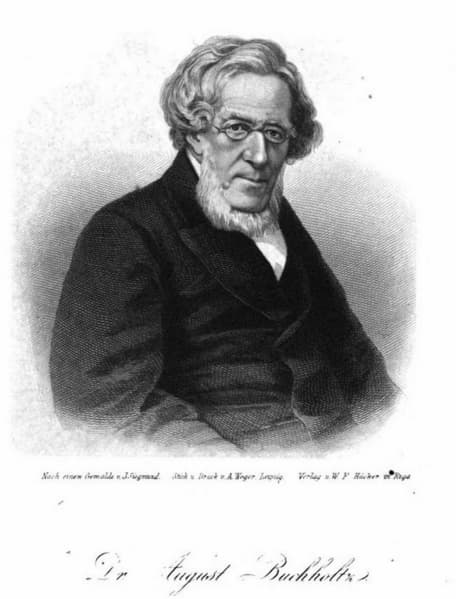C.P.E. Bach composed a number of character pieces for solo keyboard between 1754 and 1758. He used a French model, the pièce de caractère, and called his works Petites Pièces. The works were named after Bach’s friends and acquaintances. Although the works had mostly men as their subjects, which would have taken a masculine definitive article (Le), they were all given feminine articles (La) for their titles, as this refers to the gender of the word ‘pièces’ as feminine.

Franz Conrad Löhr: C.P.E. Bach (Gemäldegalerie der Staatlichen Museen zu Berlin)
La Prinzette (Wq 117/21), a rare female appearance in the series, is about the Baroness Johanna Benedicte, wife of Baron Friedrich Wilhelm von Printzen. The baroness and her mother attended the christening of Bach’s younger son, Johann Sebastian, in 1748, but nothing else is known about the Baroness and the Bach family’s interactions. The melody is elaborate and ornate and uses both a ‘lombardic’ rhythm, where the dotted rhythm begins with the shorter note and rolls and rolls of demisemiquavers (32nd notes).
C.P.E. Bach: La Prinzette, Wq. 117/21: La Prinzette, W. 117/21, H. 91 (Miklós Spányi, clavichord)
The subject of L’Aly Rupalich (Wq. 117/27) has not been determined, but a discovery of the work in an early C.P.E. Bach manuscript source carries the title La Bach, so it may be that this is a self-portrait – as one writer put it, the work ‘displays an artless surface that hides a complex character’. After beginning in a jolly manner with a drum-like bass, the implied stability of the bass line leads, unfortunately, to tonal ambiguities, and the piece wanders through several keys and tails off at the end. If it’s a self-portrait, it’s an interesting look at how C.P.E. Bach thought of himself.
C.P.E. Bach: L’Aly Rupalich, Wq. 117/27, H. 95 (Miklós Spányi, clavichord)
La Gleim (W. 117/19) refers to the poet Johann Wilhelm Ludwig Gleim (1719-1803), who left Berlin in the mid-1740s to move to the provincial town of Halberstadt, where he was secretary to the cathedral Chapter. His loneliness outside Berlin led to a tremendous correspondence with the friends he left behind, including C.P.E. Bach. Bach set several of Gleim’s poems and, in his character pieces, applied a French style. The first Partie seems to be a reflection of Gleim’s oversensitive, hypochondriac nature, whereas the second Partie brightens for a moment before coming to a wistful ending.

Johann Heinrich Ramberg: Ludwig Gleim, 1789 (Halberstadt: Gleimhaus)
C.P.E. Bach: La Gleim, Wq. 117/19 (Miklós Spányi, clavichord)
The physician Georg Stahl (1713- 1772), a court councillor at the Prussian court with his father of the same name is the name behind La Stahl (W. 117/25). A solemn and stately character piece turns nervous and impassioned. Stahl’s wife was godmother to Bach’s son Johann August in 1745, and Stahl was godfather to Bach’s daughter Anna Carolina Philippina in 1747. The two families were close until Stahl died in 1772.

Ferdinand Collmann: Johann Georg Stahl, 1789 (Halberstadt: Gleimhaus)
C.P.E. Bach: La Stahl, W. 117/25 (Miklós Spányi, clavichord)
La Bergius (W. 117/20) was for Johann Wilhelm Bergius (1713-1765), court councillor, regional collector and mortgage registrar. He is another name encountered in Gleim’s correspondence. His character piece is a rondo that modulates so that the rondo refrain occurs in different keys. Additionally, the rondo theme itself is varied on each reappearance.
C.P.E. Bach: La Bergius, Wq. 117/20 (Miklós Spányi, clavichord)
La Buchholz (W. 117/24) is probably named after Johann August Buchholtz (1706-1793), a privy councillor and a patron of literature and is a work filled with melodic ideas that have a structure that has not only binary and ternary designs but is also a rondo.

J. Siegmund: Johann August Buchholtz
C.P.E. Bach: La Buchholtz, Wq. 117/24 (Miklós Spányi, clavichord)
Another rondo forms the structure of L’Herrmann (W. 117/23), named for Friedrich Gottfried Herrmann, the privy councillor and clerk.
C.P.E. Bach: L’Hermann, Wq. 117/23 (Miklós Spányi, clavichord)
There are even more of C.P.E Bach’s character pieces, but this sample will give you an idea of how he depicted those around him. One anonymous contemporary, writing in the journal Ephemeriden der Menschheit (Brief Notes on Humanity) said about the works: While C.P.E. Bach was in Berlin, he illustrated the characters of people he knew in suitable clavier pieces and various people who knew the individuals concerned at the time assumed the author that ‘their Humours and manners in Society were accurately expressed in those same pieces; only one has to have heard the pieces played by Bach himself’.
For more of the best in classical music, sign up for our E-Newsletter

